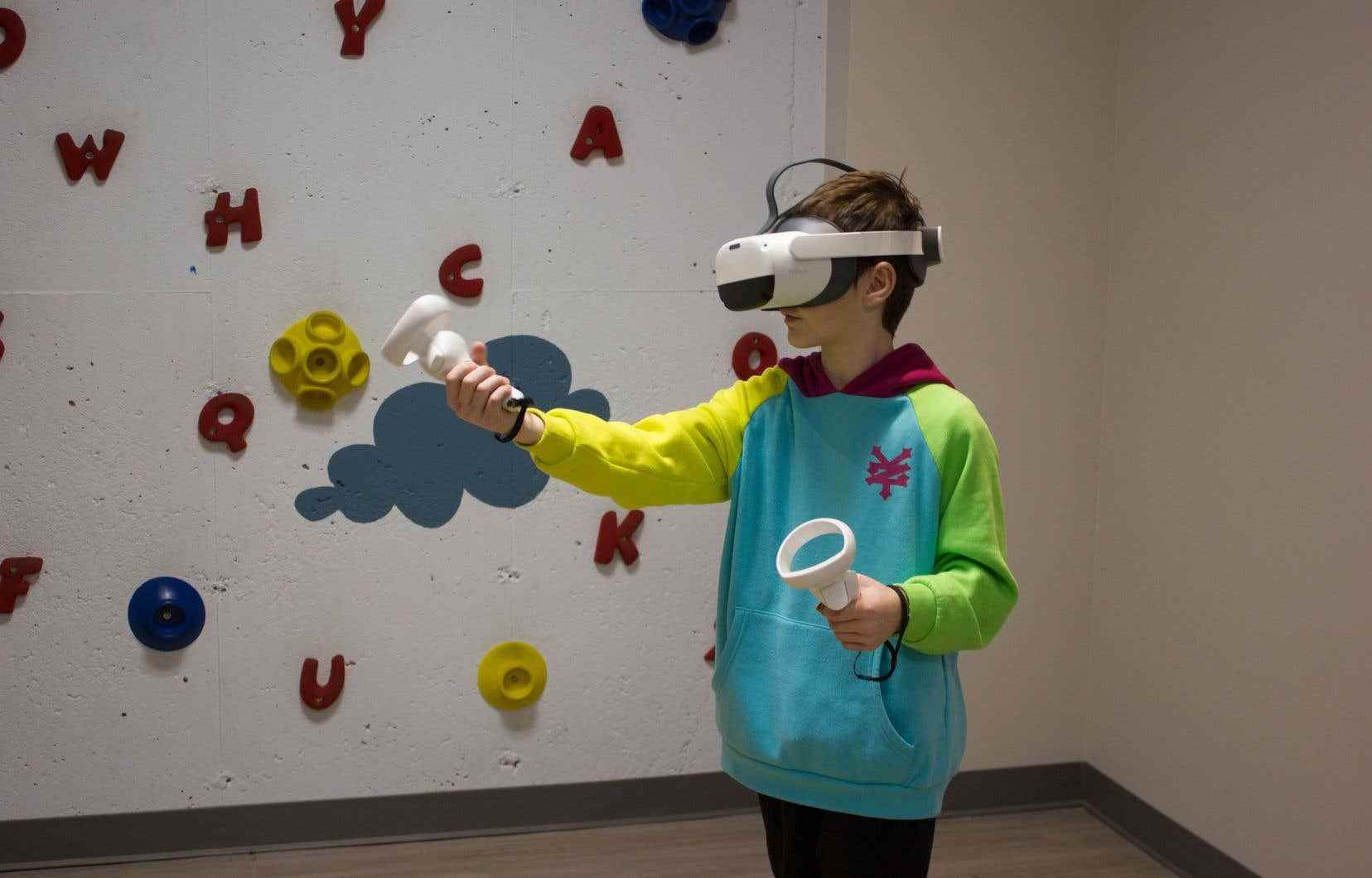Virtually absent from schools in Quebec so far, virtual reality should establish itself as a complementary tool to traditional methods. At least that’s what the local company Aleo offers, which is plotting a small revolution in the field of education. Its four young founders wish to implement virtual reality games in the classrooms in order to contribute to the success of dyslexic-dysorthographic primary school pupils or those having difficulties in French.
“At seven years old, I received diagnoses of the beautiful skewer: dyslexia, dysorthographia and ADD [trouble déficitaire de l’attention] “, says Catherine Bazinet, 25, creative director and co-founder of Aleo, with her older sister and two former classmates. Having experienced learning disabilities throughout her life as a student, she was inspired by how technology has helped her on her own journey to “enable other young people to work to their full potential”.
Launched in 2020, Aleo mainly targets students aged 7 to 12, who are more likely to feel intimidated by traditional remedial consultations. The company offers a “turnkey” solution including virtual reality headsets, a game and software to measure student results. His product is now sold to remedial clinics and schools across the province. It is, according to M.me Bazinet, of the very first example of an orthopedagogical virtual reality platform in Quebec.
“I’m so grateful for all the help I received as a student,” she says. At first, it was the old method, with paper and pencil. I really observed an evolution. In elementary school, I had access to an electronic dictionary and, later, I was able to use a computer during my assessments. Frankly, it’s thanks to technology that I managed to make it to university. Today, I make it my mission to use it to help young people put themselves on the same level as others. »
Pedagogical virtues
Jonathan Bonneau is a professor in the bachelor’s degree in interactive media at UQAM, from which Catherine is a graduate. He also works at the Socio-digital Media and Gamification Research Laboratory, where he has observed “many benefits” of artificial intelligence in an educational context.
“We need to do more research on the impact of virtual reality on students with learning disabilities compared to regular classrooms,” he says. On the other hand, we know that this technology makes it possible to learn more quickly, because it borrows from video games. It makes it possible to forget the learning environment. We forget that we are at home or at school. We are immersed in a new universe that we can appropriate, which can put the student in confidence. »
Catherine Bazinet specifies that only one game is currently available on her platform, but that others will be added later. Entitled The Yeti Valley, lasting approximately 15 minutes, it addresses the visual confusion between certain logatoms or graphemes. The user must help a yeti to prepare for a battle of snowballs on which are inscribed non-words comprising the language confusions worked on.
It was thanks to technology that I managed to make it to university. Today, I make it my mission to use it to help young people put themselves on the same level as others.
“Students love it,” says remedial teacher Myriam Gagnon, who offers it to clients of her private clinic who confuse the letters b, d, p and q. It is often used as a reward. Integrating a virtual reality world allows children to relax, to work on their reading and writing without the negative emotional connection that they can have with other exercises. »
An expanding field
In 2019, the Quebec Ministry of Education launched its Digital Competency Reference Framework, along with investments of more than $1.2 billion over five years to contribute to the “digital shift” of schools. This envelope can therefore allow school service centers to acquire virtual reality headsets, among other things. However, the government has not issued specific directives on this subject.
For now, M.me Gagnon believes that virtual reality “should be used more at school” and that “more and more” projects like that of the Bazinet sisters are likely to see the light of day.
Mr. Bonneau, for his part, sees “only the good” in this, provided that the technology is used correctly. It recognizes that certain user data, such as their eye movements and brain waves, or the frequency of their heartbeats, can be retrieved without their knowledge. This data can, however, be used to measure user performance and “allow interactive games to adapt to the student’s learning curve”.
The professor adds that many companies are investing, at present, in order to perfect educational tools in virtual reality, including the giants Roblox and Minecraft. While we “also see more and more projects appearing in Canada”, Aleo still remains, according to him, “among the best placed to reach several types of clientele in Quebec”.
At the moment, Catherine’s platform is only used at two establishments, but she hopes to obtain more funding to develop more games and spread it throughout the province. One thing is certain, she and her small team will not stop trying. “One day, we will have to sit down with the Minister of Education to talk about it. »
